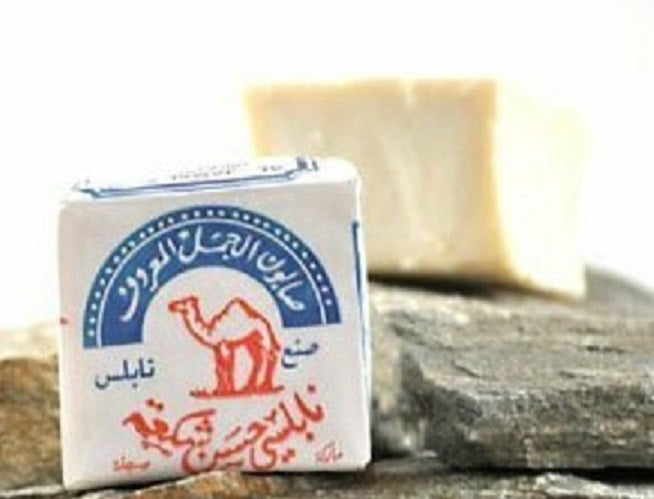
Getting Back to Basics with Body Care Soaps Part 1
This blog is part one in a series that has to do with “getting back to basics” when it comes to what we put on our bodies. By “basics” I mean products with just a few ingredients with names we can all pronounce.
The Bedouin Company is pleased to offer one of these “basic” products: Nablus Soap from Nablus, Palestine. It’s made from three simple ingredients: virgin olive oil, sodium hydroxide (caustic soda from the Barilla plant ashes), and water.
The food industry has outpaced body care products when it comes to new, more natural products, i.e. organic, non-GMO…why aren’t we just as selective when it comes to products we put on our bodies? After all, if we’re buying something that our skin absorbs, shouldn’t it be as natural as possible?
People are attracted to body wash and soaps that have a “pretty color” or “smell nice.” Really though they need to understand what’s in these products, e.g. harmful cosmetic dyes, synthetic fragrances, and other toxins.
Let’s start with nine (9) ingredients commonly found in many body washes and/or soaps.
- Parabens – inexpensive and widely-used as preservatives to prevent the growth of bacteria, mold, and yeast in cosmetic products. However, parabens possess estrogen-mimicking properties associated with an increased risk of breast cancer. The chemicals build up in the bloodstream. Parabens have been identified in breast cancer biopsy samples.
- Synthetic colors – marked as FD&C or D&C, these synthetic colors are derived from petroleum and are suspected to be a human carcinogen, a skin irritant, and linked to ADHD. These are banned additives in the European Union.
- “Fragrance” - a mystery because what exactly does it mean? What chemicals make up a “fragrance?” These synthetic “fragrances” have been associated with allergies, dermatitis, respiratory distress, and potential effects on the reproductive system.
- Phthalates - chemicals used in hundreds of products to increase the flexibility and softness of plastics. They are known to be endocrine disruptors, have been linked to increased risk of breast cancer, premature breast development in girls, and birth defects. There are links to diabetes, ADHD, asthma. Avoid products that are fragranced coming in cheap plastic packaging!
- Triclosan – an anti-microbial chemical that's a known endocrine disruptor -- especially thyroid and reproductive hormones, and a skin irritant. There is concern triclosan can make bacteria resistant to antibiotics. It can be found in toothpaste, antibacterial soaps, and deodorants.
- Sodium Lauryl Sulfate (SLS) / Sodium Laureth Sulfate (SLES) - found in more than 90 percent of personal care and cleaning products (think foaming products). SLS's are known to be skin, lung, and eye irritants. It also has the potential to interact and combine with other chemicals to form nitrosamines, a carcinogen.
- Formaldehyde – and formaldehyde-releasing preservatives (FRP's) preservatives are used in many cosmetic products to help prevent bacteria growth. This chemical was deemed as a human carcinogen It is known to cause allergic skin reactions and it may also be harmful to the immune system.
- Toluene – also labeled as benzene, toloul, phenylmethane, methylbenzene. It can affect the respiratory system, cause nausea, and irritate your skin.
- Propylene glycol - small organic alcohol commonly used as a skin-conditioning agent, but it’s classified as a skin irritant and linked with causing dermatitis as well as hives in humans
In part 2, I will continue talking about Nablus Soap. In the meantime, “go read your product labels to better understand what you are putting on your body.”